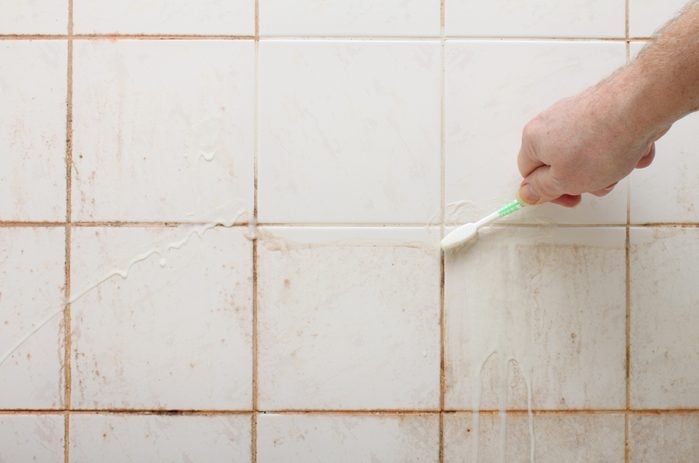How to Get Rid of Pink Mold in the Shower
Updated: Mar. 03, 2023

Noticing strange pink steaks on your shower walls and floor? This pink mold is common and preventable—tackle it with our foolproof cleaning tricks.
Cleaning your bathroom involves all kinds of sights that are not pleasant. Things like soap scum, hard water spots and shower curtain mildew come with the territory. But what about that weird pink mold at the bottom of your shower?
Follow this tutorial and every surface will soon be sparkling. There’s nothing better than a fresh, spotless bathroom!
What is the pink mold in my shower?
So here’s the surprising fact: the “pink mold” in your shower is not mold. Ready to get scientific? The pink residue often found on your shower floor, covering your grout, near the toilet water line and hanging on the bottom of the shower curtain is actually a type of airborne bacteria called Serratia marcescens.
The bacteria can be found almost anywhere (thanks to being airborne), but often pops up in the bathroom because it thrives in damp environments and grows by feeding off fat and mineral deposits from soap scum and shampoo.
How to Get Rid of Pink Mold
The good news is Serratia marcescens is mostly harmless. Touching it while you’re showering or cleaning won’t cause any problems (in rare cases it can cause infections through open wounds or the eye). But it’s unsightly and you don’t want it in your bathroom. Here’s how to get rid of “pink mold” for good.
Shower Curtain & Liner
Fill a spray bottle with a 1:1 ratio of bleach and water, then spray any pink spots on your shower curtain and liner (if it’s a colorful curtain, use a color-safe cleaner like OxiClean). Let sit for 10 minutes. Then remove both the curtain and the liner and run it through a cycle in the washing machine. Use your go-to laundry detergent, plus another tablespoon of bleach (again, only if your curtain is white). Hang to dry.
Shower Walls & Doors
Create a cleaning paste with 1/4 cup of baking soda and 1 tablespoon of liquid dish soap. Using a soft bristle brush, apply paste to the bacteria and scrub away the pink film. Rinse. Once the pink is gone, you’ll need to disinfect the area. Fill a spray bottle with a 1:1 ratio of bleach and water and spray the contaminated area, let sit for 10 minutes, then rinse. Dry with a towel or squeegee.
Tile & Grout
Tile and grout (and any hard, bleach-safe surface) can be cleaned with the same method as shower walls and doors: scrub with baking soda paste, then disinfect with bleach mixture. If you have natural stone tile, keep in mind that the bleach and water mixture is safe to use on natural stone tile occasionally; but due to the high pH level, bleach can damage natural stone over time. Seal stone tile regularly, and keep it clean and dry as much as possible to avoid needing bleach too often.
How to Prevent Pink Mold
Unfortunately, there are no shortcuts when it comes to keeping your bathroom free from bacteria. You have to clean your bathroom regularly (don’t make these mistakes!). Be diligent when it comes to soap scum (Serratia marcescens’ favorite meal). Because bacteria grows slower in clean and dry environments, make sure your bathroom is dry and well-ventilated. Turn on your vent fan to clear shower steam. Then, dry the shower walls thoroughly with a squeegee after showering.
